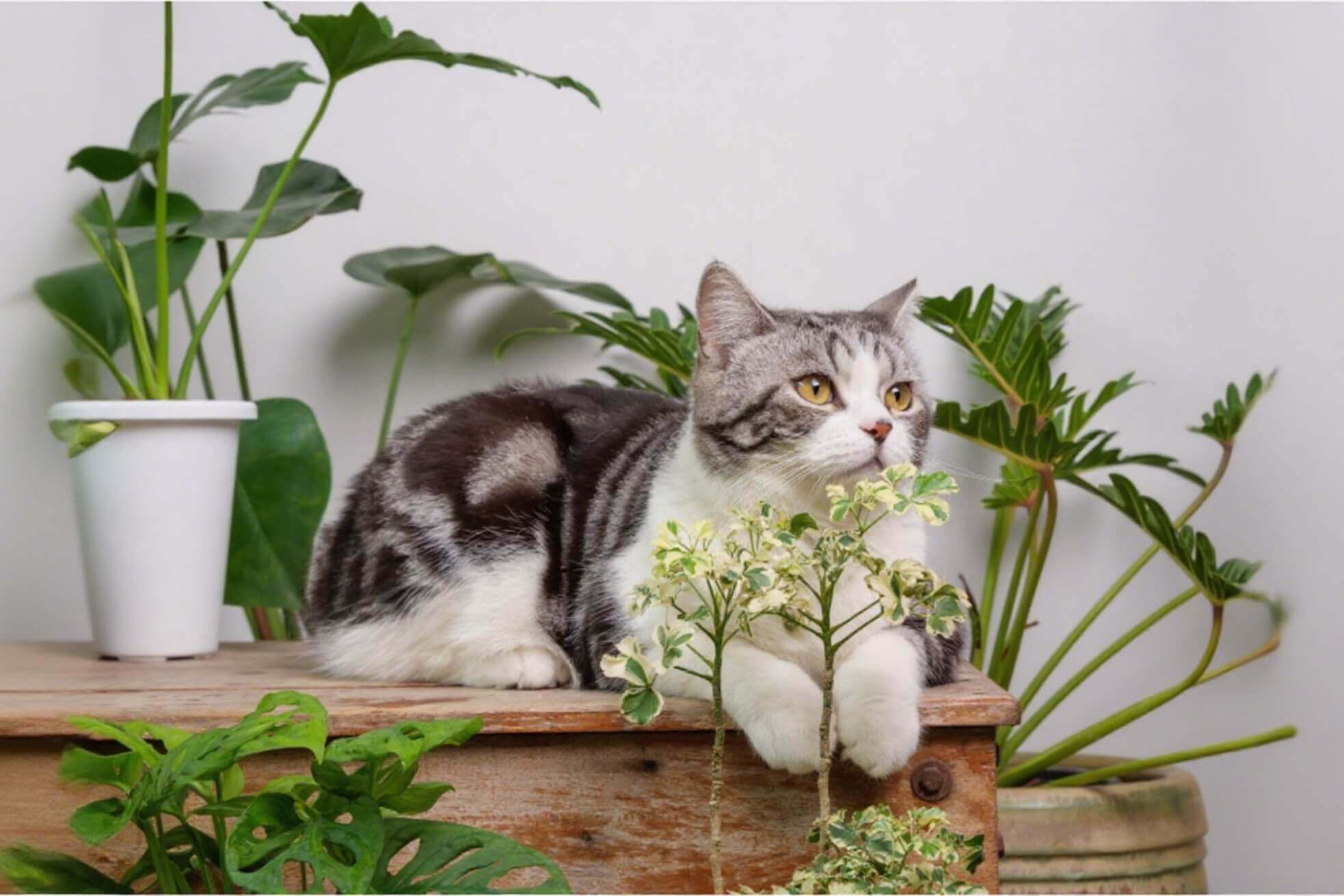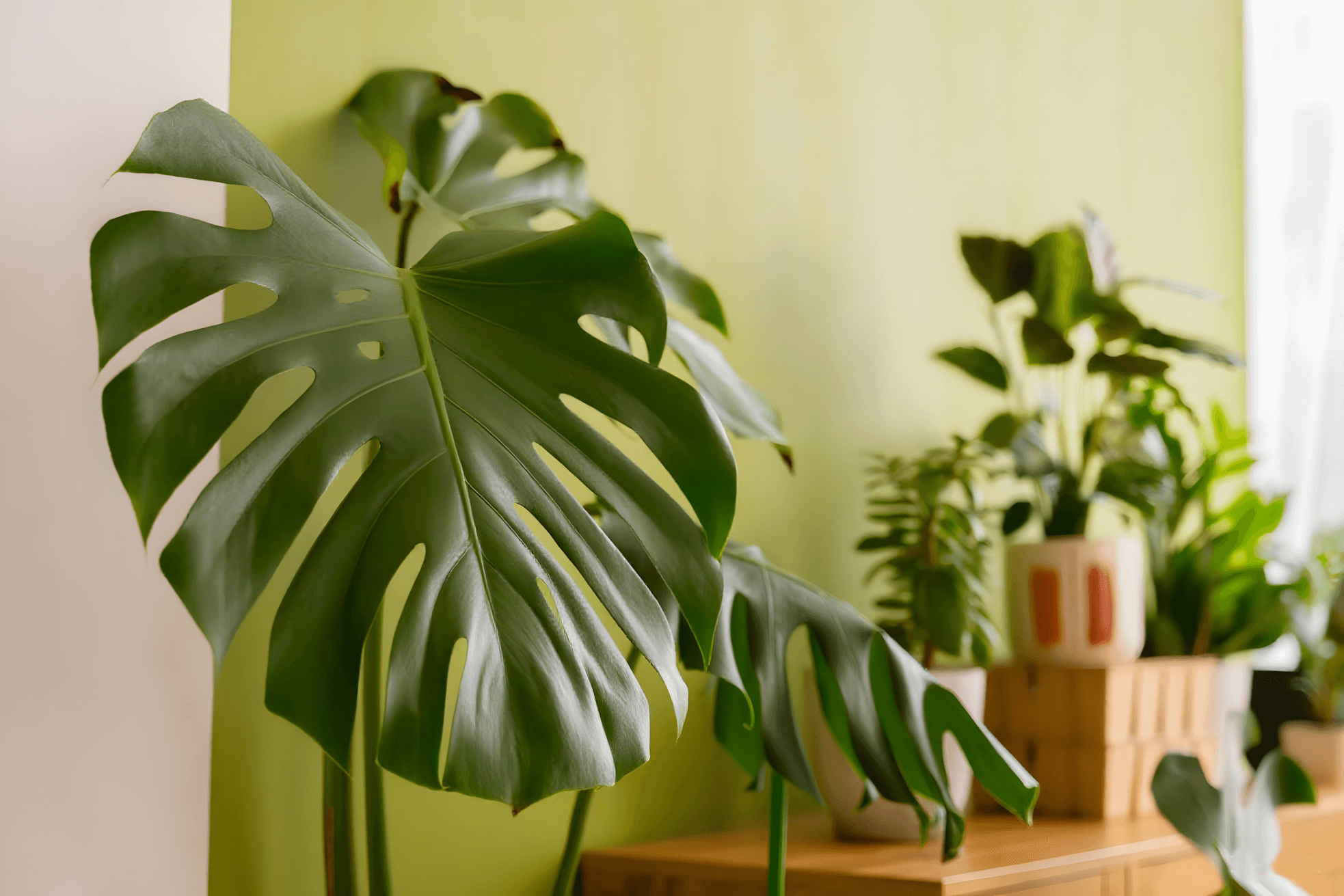10 Mind-Blowing Houseplant Secrets You Never Knew
Honestly, after years of plant parenting, I've discovered that my green buddies are way more impressive than I ever imagined. Take my desk snake plant, for instance – turns out it's actually working the night shift! And my friend's trendy Monstera? Those holes are actually hurricane protection. Today I'm sharing the fascinating secrets behind these plants that will completely change how you see your leafy companions.
1. Monstera's "Swiss Cheese" Holes Are Actually Wind Armor

I always thought those iconic holes in Monstera leaves were just for looks, but they're actually survival genius. In Central American rainforests, when hurricanes hit with 60+ mph winds, regular leaves would be shredded instantly. But Monsteras are clever – they've got built-in windows that let wind pass right through, keeping the plant intact. Even smarter, these holes act like skylights, channeling sunlight down to the lower leaves that would otherwise be stuck in shade.
I keep mine by an east-facing window now to mimic its natural light strategy, and it's thriving.
2. Pothos: The Plant World's Wolverine

Everyone talks about pothos purifying air, but honestly, you'd need 700 plants in a 1,500 sq ft home to make any real difference. The real magic? Its incredible regeneration powers. Any cutting with a node (those little bumps where leaves grow) will sprout roots and stems in water within days. No wonder my grandmother's pothos has survived twenty years in her dim kitchen and is still the star of every plant swap group.
I now cut 4-inch sections to give as gifts – they're more popular than store-bought flowers.
3. Fiddle Leaf Fig: The Ultimate Drama Queen

This Instagram darling is basically the high-maintenance friend of the plant world. Direct sunlight? It'll burn holes in its leaves within hours. Move it to a dim corner? Instant yellow leaf tantrum. Why so picky? Because in its native West African rainforest, it's used to that perfect dappled light filtering through the canopy.
I've tried everything, and SANSI's 24W full-spectrum grow light bulbs finally solved the problem. They replicate its natural light environment perfectly – 12 hours a day, placed 3 feet above the plant, and no more drama.
4. Snake Plant: Your Bedroom's Secret Oxygen Factory

While most plants actually consume oxygen at night, snake plants are the night owls of the plant world. They use a special type of photosynthesis that lets them absorb CO₂ and release oxygen while you sleep. Perfect bedroom companions that actually improve your air quality overnight.
Plus, with good light, these guys grow three times faster. I added a SANSI clip-on grow light to supercharge their air-purifying superpowers, and the results are amazing.
5. Heartleaf Philodendron's Amazing Transformation

Here's something most people don't realize – those cute heart-shaped leaves are just the "teenage" phase. Give it a moss pole and proper lighting, and it transforms into something completely different, with massive split leaves that can reach two feet wide. This is its natural instinct for climbing trees in the rainforest, getting bigger and more dramatic as it reaches for sunlight.
These transformation time-lapses are absolutely viral on PlantTok right now, with millions of views.
6. Aloe Vera: Your Kitchen's Natural First Aid Kit

Last time I got splattered with hot oil while cooking, I just snapped off an aloe leaf and applied it directly. Seriously works better than any store-bought cream. Turns out aloe's polysaccharides have real anti-inflammatory properties that heal second-degree burns 30% faster than regular treatments.
Pro tip: aloe gets more potent with age, reaching peak healing power at three years old.
7. Peace Lily: The Most Honest Plant Ever

When peace lilies need water, they put on quite the performance – leaves drooping, stems buckling, basically collapsing like they're auditioning for a Victorian fainting scene. But give them a drink, and they bounce back within 4 hours. It's called turgor pressure recovery, but I call it the ultimate beginner's cheat code.
Just don't fall for the drama too often – overwatering will kill them faster than underwatering.
8. ZZ Plant: The Apocalypse Survivor

Those thick "stems" are actually water-storing leaf stalks, and underground, potato-like rhizomes hoard moisture and nutrients for up to three months. This design comes from surviving droughts in Africa, where local tribes even learned to boil and process the toxic parts into emergency food during famines.
Basically, your desk plant could survive a zombie apocalypse.
9. Rubber Plant: The Toxic Air Purifier

Rubber plants are genuinely great at removing formaldehyde from furniture and carpets, but here's the catch – that milky sap is loaded with latex and enzymes that cause skin rashes. In the wild, this chemical cocktail keeps bugs away, but for us, it means safety first.
I always wear gloves when pruning and wash my tools with soapy water afterward.
10. Air Plants: Heavy Metal Detectives

Air plants survive on nothing but air and rainwater – no soil needed. But researchers discovered they have a hidden talent: absorbing lead and mercury from polluted air. Those tiny scales covering their leaves work like velcro, trapping toxins and potentially cleaning the air in urban apartments.
I keep several near my front door now to catch pollutants from shoes and clothes.
After learning all this, I look at my plants completely differently. They're not just pretty decorations – they're master engineers, survival experts, and silent guardians working 24/7. Each leaf tells an incredible story of adaptation and resilience.
Want to dive deeper into plant science? Our Learning Center publishes weekly deep-dives like "Why Your Fern Hates Tap Water." Join our Exclusive Community to swap care tips with fellow plant enthusiasts and get early access to special offers and discounts.
What's the most surprising thing your plants have done? I'd love to hear your stories!



